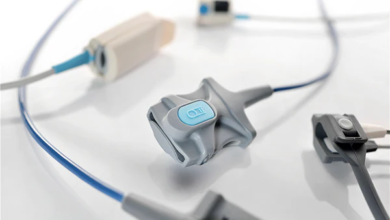10 Essential Tips for Effective Selenium Testing

Modern applications are a one-stop solution that can cater to the needs of every end user. In this generation, users can access multiple data, accomplish different goals and access various forms of interaction through one app. However, to efficiently perform this process, applications must have access to multiple forms of data and web elements at the same time. So, to verify the proper execution of all these features the app developers must ensure the stability and interactivity of the web elements. Thus, application testing has become one of the most important processes in the modern app development life cycle. To keep up with the demands, various modern testing technologies like automation testing have come to the market. Selenium testing is one of the most important components of modern test automation.
With this article, we will explore the world of effective Selenium Testing. We will discuss some of the most effective and essential tips that will help the application developers and testers to elevate the standards of the Selenium test bench. Finally, we’ll conclude our explanation with the context of various tools and platforms that can improve the quality of Selenium-based test cases.
Understanding Selenium and the World of Test Automation
To evaluate the importance of Selenium in the modern application testing process, we must have an initial impression of test automation. For the basic explanation, it is an efficient effort towards the removal of human involvement in the application test execution process. As a substitute, the system will use a text file that will have all the required parameters, data sets, and other components to allow it to interact with the application like a normal user. Based on these interactions and communications, the system will generate a detailed report showing the usability, stability, and user interactivity of the web application. The app developers and testers can later go through this report to understand whether the application is ready for the open world.
It is also possible to make substantial changes in the automation test file to ensure that the test reports are customized according to the application undergoing the development project. The application developers also have a simplified method to store, maintain and reuse the automation test data in future app development projects. Experts believe that it is possible to reuse up to 65% of test data in other projects as well. However, test automation has a substantially high initial investment that all app development companies must bear. This investment will cover all the charges for adding various tools, libraries, and plugins that are critical for the smooth execution of automated test cases. So, the app development companies must have enough resources to justify the upfront investment in test automation.
Selenium is one of the most common names that come into discussion while we are on the topic of automation testing. This is because it has been one of the most efficient ways to verify the proper performance of web applications for over 10 years now. Selenium is an open-source test suite that consists of multiple tools that help developers at different stages of the automation testing cycle. Since it’s open source, the app developers do not have to worry about any charges or licenses to use the features of Selenium. However, app developers must remember that Selenium is only usable when they’re working with web applications. So, for other applications like native apps, hybrid apps, and cross-platform apps, the application developers will be forced to look for an alternative in the market. Now let us understand the role of the most useful tools present in this suit:
Whenever we are on the topic of Selenium, WebDriver is one of the most common tools that come into our minds. This is because the Selenium WebDriver is responsible for initiating the test cases and ensuring that they’re executed on the correct target elements of a web application. The Selenium WebDriver is often regarded as an upgraded version of the previously present Selenium RC. With the help of the Selenium WebDriver, the developers can natively run the test cases on web browsers as it can communicate with all the web elements without a native engine.
The Selenium Integrated Development Environment helps the application developers to create the test cases in a codeless format. This means that the system will automatically write the automation test cases without the involvement of human developers. For this process, the app developers only have to use the application like a normal user system. Based on these introductions, the system will continue to generate the test cases in real-time.
In case the developers need to write the test cases manually, they can use the Selenium client API. This is because, with the help of the Selenium client API, it is possible to write the automation test cases in the preferred programming languages of web developers. Some of the most well-known names supported by the Selenium client API include JavaScript, Python, Ruby, and many others.
Finally, the Selenium Grid helps the developers to improve the efficiency of the Selenium-based automation test cases. This is because, with the help of the Selenium Grid, it is possible to introduce parallel test configuration in the application testing process. The benefit of this process is that it helps the application developers to run multiple test cases on multiple machines at the same time.
Evaluating The Essential Tips for Effective Selenium Testing
To help the new developers and testers adopt Selenium testing, we have created a list of the most effective tips in this segment. With the implementation of these tips, the developers can not only improve the efficiency of the testing process but can also improve the quality of the application undergoing the development process. They are as follows:
- To properly implement Selenium-based automation testing, it is very important for the application developers to clearly understand the app undergoing the development process. They should also have an elaborate idea about the target audience for the web application.
- Before executing the test cases, the application developers and testers must have an elaborate test plan that will guide them throughout the testing process. While devising this plan, the developers must include not only the testing team but also the business team of the company. This is a very important process to avoid any unwanted surprises during the application testing process.
- In modern apps, various elements depend on other web elements for proper implementation. So, the developers must use explicit waits to pause the test cases until the completion of any required parameter. This will help eliminate any false positives or false negatives.
- While using Selenium testing, the developers must use locators to identify multiple elements on the web pages. Some of the most commonly used locators include XPath and CSS selectors.
- The use of a page object model can help the application developers to create separate classes for all the web pages present in the application. It also helps to organize the test cases with the help of separation between UI elements and test logic.
- While using Selenium-based automation testing, the developers must be careful to properly separate the test data from the test scripts. There are various external data sources like CSV files, excel sheets, or databases that can help the application developers to manage the test cases.
- Application developers need to integrate robust error-handling mechanisms while using Selenium testing. It will help to improve the simplicity of the test case debugging process.
- The implementation of parallel testing can help developers to run hundreds of different test cases at the same time on multiple machines.
- Application developers need to maintain the test cases and review their standards frequently. The application developers can also use various control systems to track changes in the test code.
- Finally, the use of continuous integration can help app developers to detect changes in the test code at the early stages of the development cycle. Some of the most used CI tools include Jenkins or Travis CI.
Influence of Platforms and Tools in Modern Selenium Testing
There are thousands of tools and platforms easily available in the market that will help the application developers in this process. We can consider the example of cloud platforms that not only improve the testing experience but also eliminate the requirements of having a physical device testing lab. These labs are usually used by app development companies to ensure that the applications are functional based on the physical parameters of a device. However, with cloud platforms, the developers can complete all the above goals while conducting the test cases on remote servers.
Remote servers provide access to hundreds of real devices through the Internet. Finally, cloud platforms provide access to hundreds of legacy devices that are no longer available in the physical market. We can understand the role and influence of cloud-based testing in the modern app development process by bringing in LambdaTest as our reference point:
For the basic introduction, we can define this platform as a modern cloud-based cross-browser testing solution for Web apps. With the help of LambdaTest, developers can efficiently run automated cross-browser test cases on web apps and verify their integrity and stability irrespective of the user’s shift in the operating system, device version, or any other physical parameters. To improve the efficiency of the test cases, this platform has various features like parallel test execution. Other than running the automation test cases from Selenium, this can efficiently work with automation test scripts from other popular frameworks like Cypress and Playwright. In this context, we would like to mention that the developers can efficiently run Selenium-based automation test files on three thousand modern simultaneous browsers.
Finally, LambdaTest improves test case dependability by integrating real device testing with emulator testing.
The Conclusion
With this article, we explored some of the most effective tips that can help developers to improve the efficiency of their Selenium test cases. In the current state of the app development market, we can unanimously conclude that we’re slowly moving towards a market that will be completely dependent on automation testing practices. So, it is very important for app developers to not only adopt this transition but also continue improving their knowledge about all the latest additions and trends in the status of automation testing. The app companies can also help in the transition by conducting frequent awareness campaigns and seminars to spread adequate knowledge regarding healthy automation testing practices. Finally, the developers need to choose the correct tool that can complement their application development requirements and practices.





